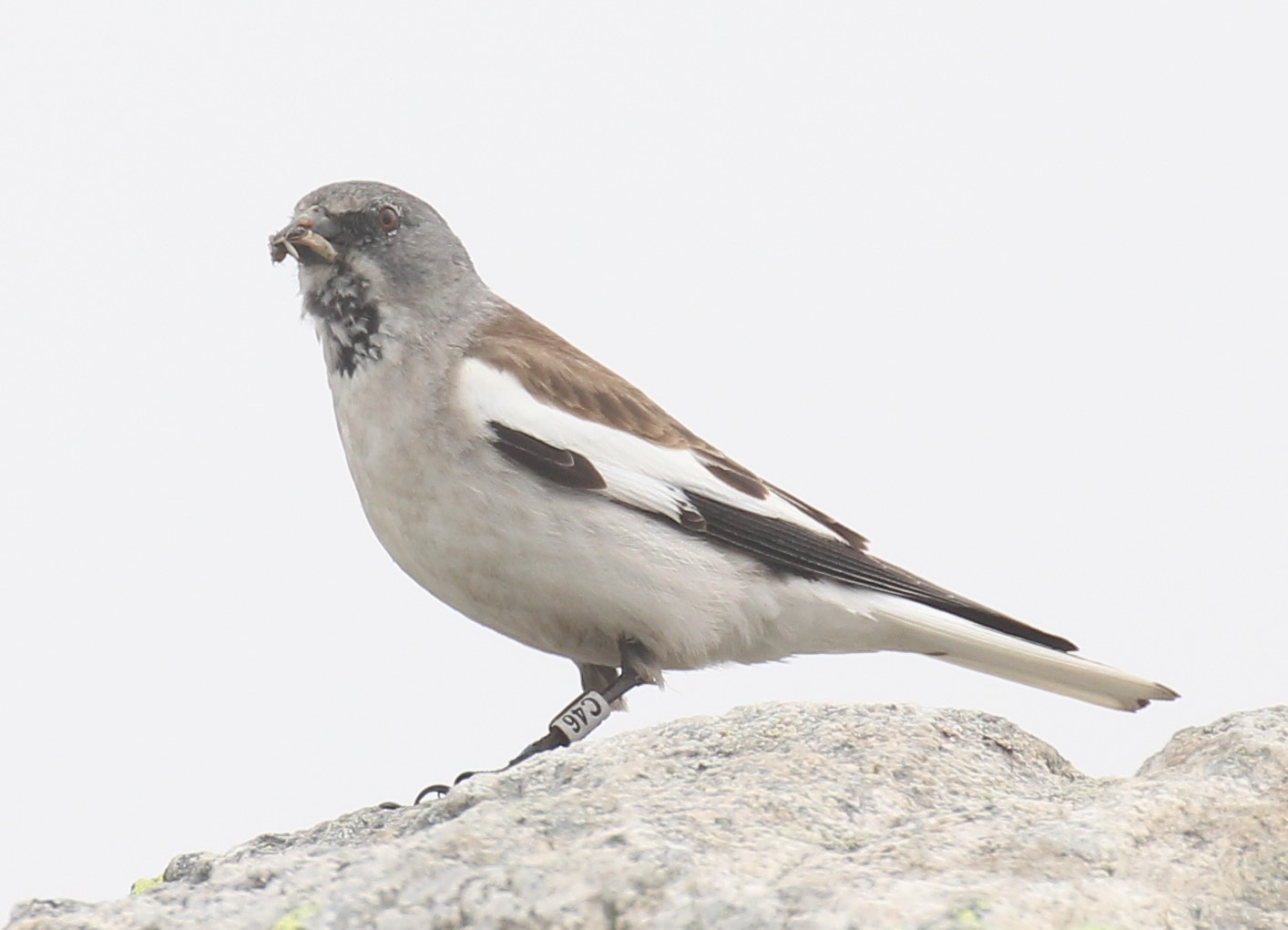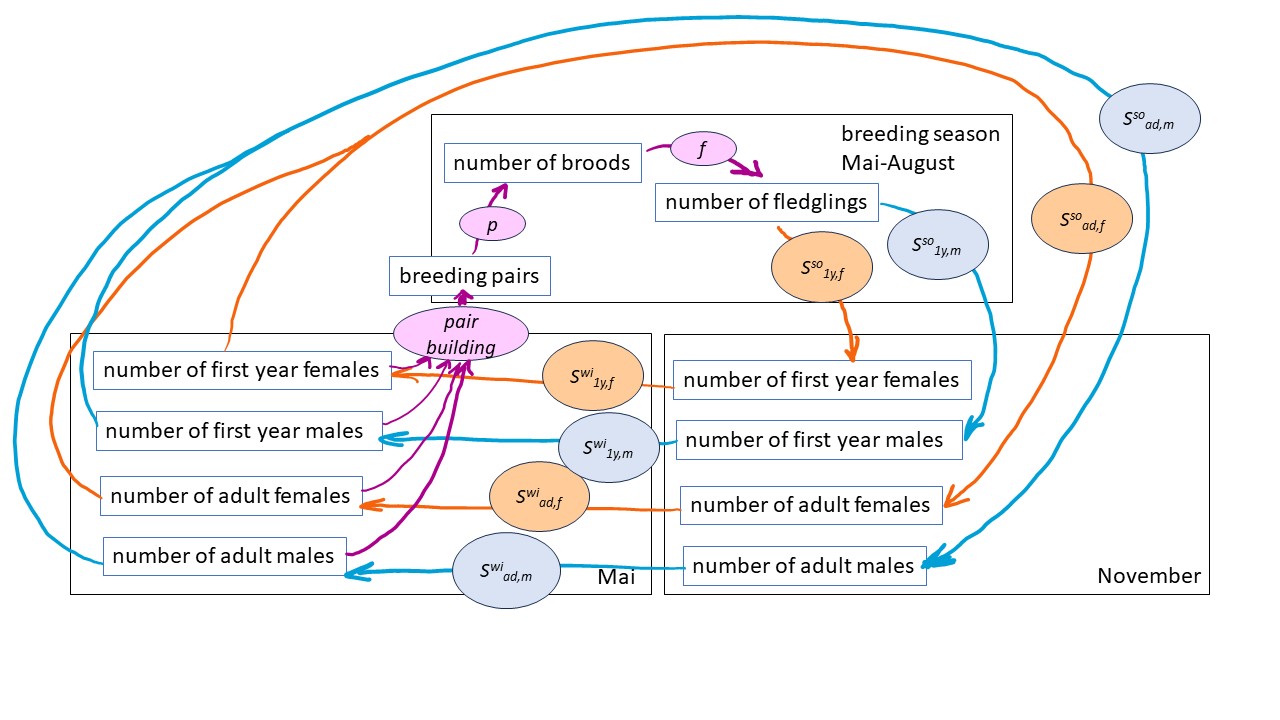2 Introduction
2.1 Background
Global warming is changing wildlife’s environments world-wide, with a disproportionate impact in mountain regions (Pepin et al. 2015; Adler et al. 2022). Especially in the Alpine environments, we find species that are specialists and endemics. For predicting Alpine biodiversity trends and assessing the consequences of human activities for nature, the understanding of how species’ population dynamics respond to environmental changes is crucial. However, studying demography of species that exclusively live in mountainous regions can be challenging due to their rarity and residence in remote and inaccessible locations. Therefore, these species remain understudied. Any empirical data or study on the influence of environmental factors on demographic parameters and species behaviour, even with limited sample size, can enhance our understanding of how mountain specialists react to environmental changes.
The aim of this online material is to compile and provide demographic data together with a population model of a high-elevation specialist bird species, the White-winged Snowfinch Montifringilla nivalis nivalis, hereafter Snowfinch (Figure 2.1).

Figure 2.1: We use alpha-numeric plastic rings that can be scanned by a scope to track individuals throughout their lifespan and observe their behaviour.
The presentation of the material serves several purposes: 1) The model summarises the current knowledge on population dynamics of the Snowfinch, 2) The model can be used to assess the sensitivity of population dynamics to changes in demographic parameters. 3) The model aids in identifying knowledge gaps and areas lacking data, 4) The model is designed to facilitate selective mating and the inheritance of individual (morphological or behavioural) traits. In the future it may enable to predict how traits change in the population. Microevolutionary change in specific traits, however, can only be addressed if trait heritability values are available, which is currently not the case for the Snowfinch. 5) The model enables the simulation of future population trajectories, allowing predictions of population trends under various scenario such as global warming scenarios or specific conservation management strategies.
The data provided here originates from our ongoing study. We appreciate if you contact the authors, in case you would like to use the data for your own studies.
If you only download the code of the population model, there is no need to contact us. Other people may have developed much nicer and more efficient model codes. But we are happy if you send us suggestions for improving our code.
2.2 Model structure
The model consists of a pre-winter (November) and a pre-breeding (May) census of first-year and adult individuals of both sexes (Figure 2.2). Keeping the populations in May and November separately allows for separate modelling of environmental influences on survival from May to November (“summer survival”) and from November to May (“winter survival”). The model also incorporates a pair-building process. Currently, only random mating with new pairs formed each year is implemented. The parameter \(p\) is a vector containing three probabilities, to skip breeding, and to do one or two broods. The three probabilities sum up to one. The parameter \(f\) is the number of fledglings produced by a pair. We assume a sex ratio of 1:1 among fledglings.

Figure 2.2: Structure of the population model. The model incorporates a pair-building process. Additionally, it includes demographic parameters that may depend on environmental variables: p = probability vector for doing 0, 1 or 2 broods; f = fecundity, i.e., the number of fledglings produced by one female in a single breeding season; and summer and winter survival rates for adults and first year birds of both sexes.
To parameterise the model, we present the currently available data below. Furthermore, we compile results from earlier studies on the relationships of demographic parameters and environmental or individual-specific variables.